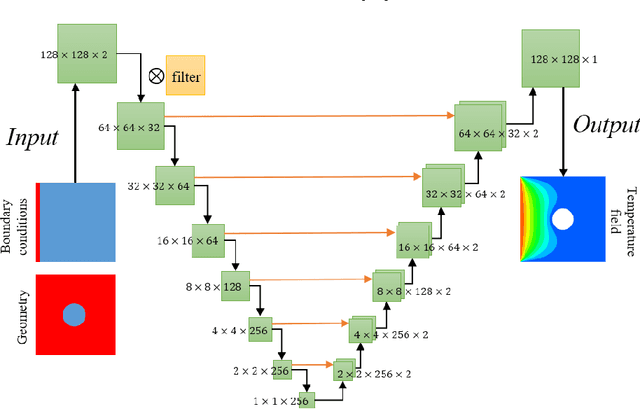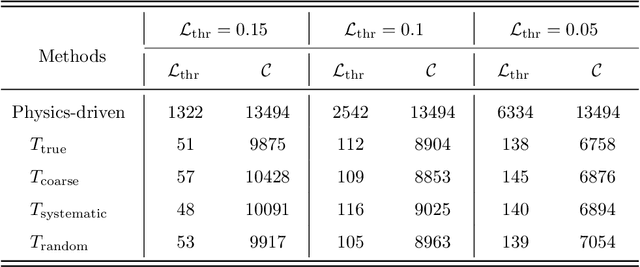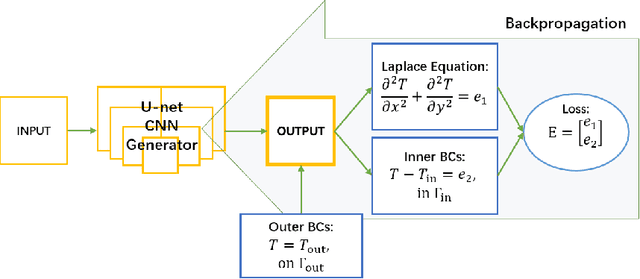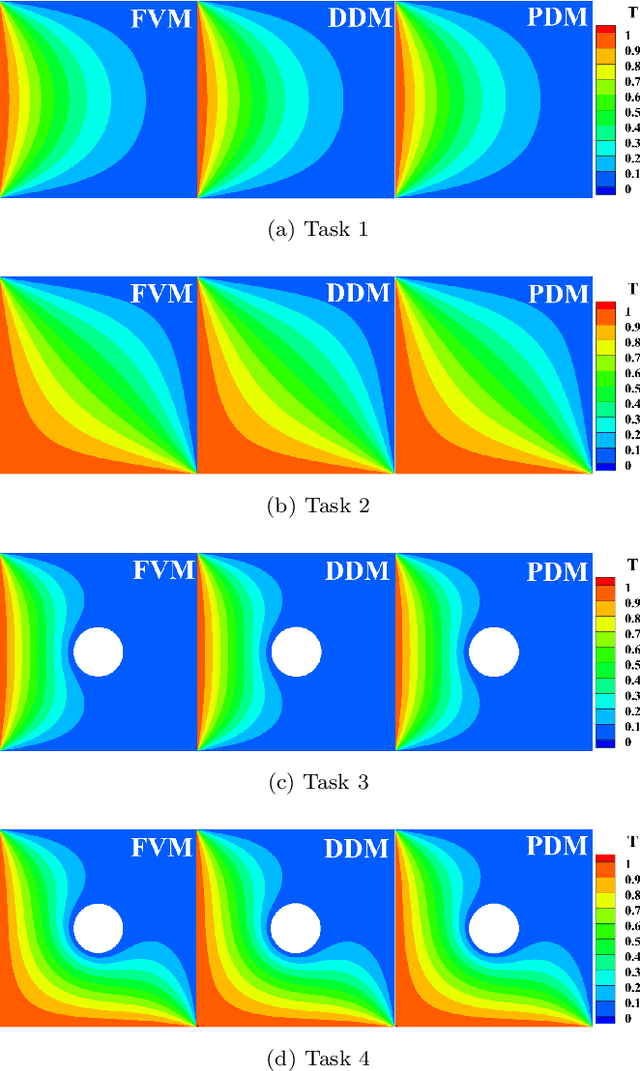A Combined Data-driven and Physics-driven Method for Steady Heat Conduction Prediction using Deep Convolutional Neural Networks
Paper and Code
May 16, 2020



With several advantages and as an alternative to predict physics field, machine learning methods can be classified into two distinct types: data-driven relying on training data and physics-driven using physics law. Choosing heat conduction problem as an example, we compared the data- and physics-driven learning process with deep Convolutional Neural Networks (CNN). It shows that the convergences of the error to ground truth solution and the residual of heat conduction equation exhibit remarkable differences. Based on this observation, we propose a combined-driven method for learning acceleration and more accurate solutions. With a weighted loss function, reference data and physical equation are able to simultaneously drive the learning. Several numerical experiments are conducted to investigate the effectiveness of the combined method. For the data-driven based method, the introduction of physical equation not only is able to speed up the convergence, but also produces physically more consistent solutions. For the physics-driven based method, it is observed that the combined method is able to speed up the convergence up to 49.0\% by using a not very restrictive coarse reference.
 Add to Chrome
Add to Chrome Add to Firefox
Add to Firefox Add to Edge
Add to Edge